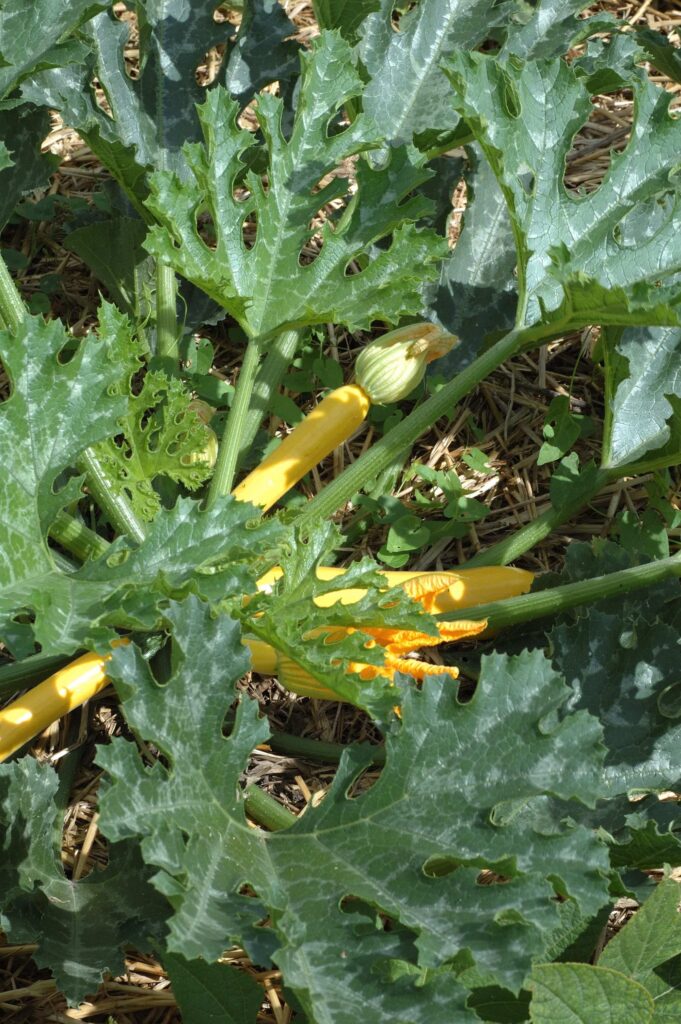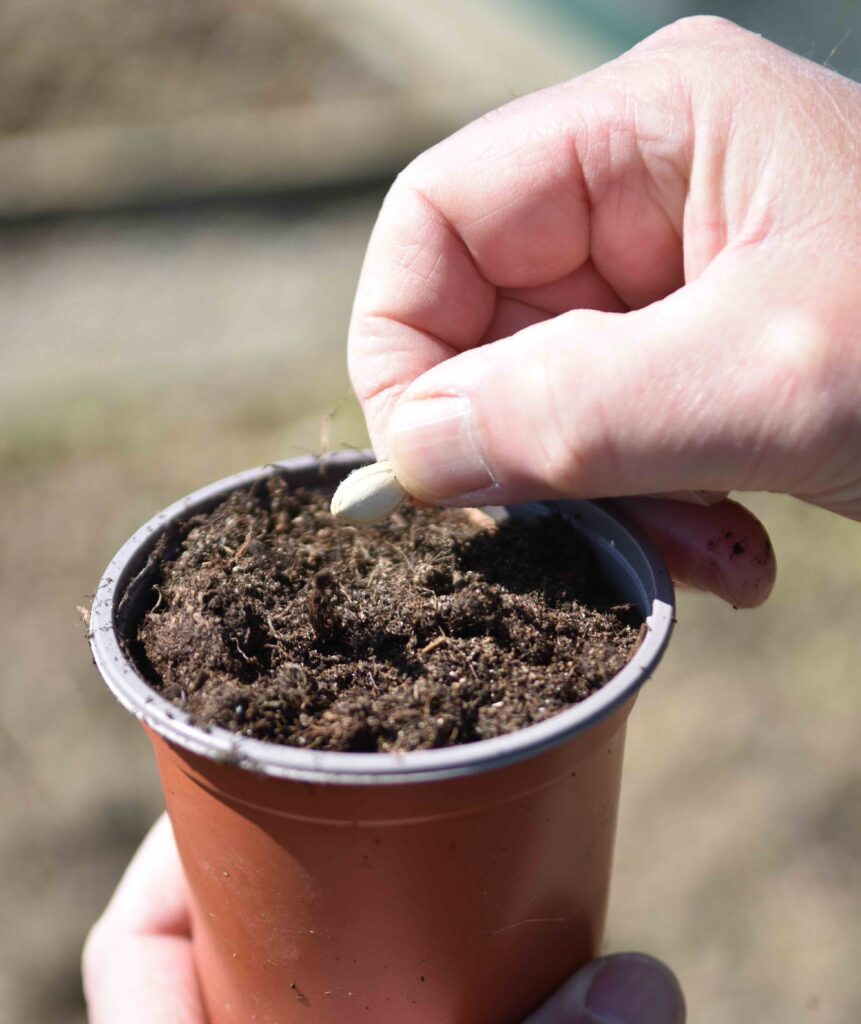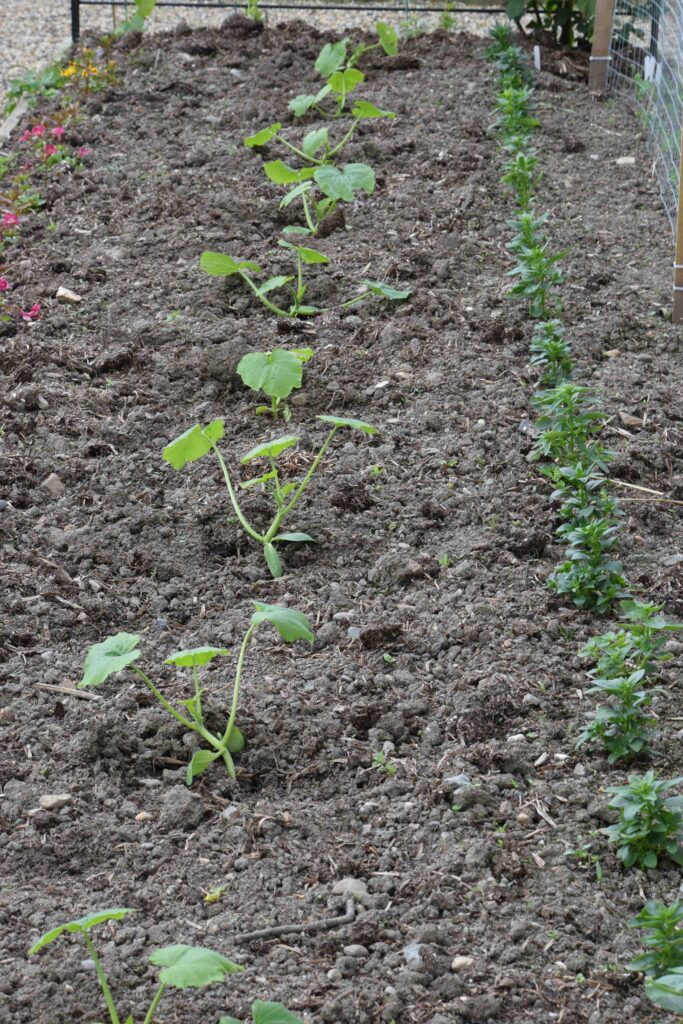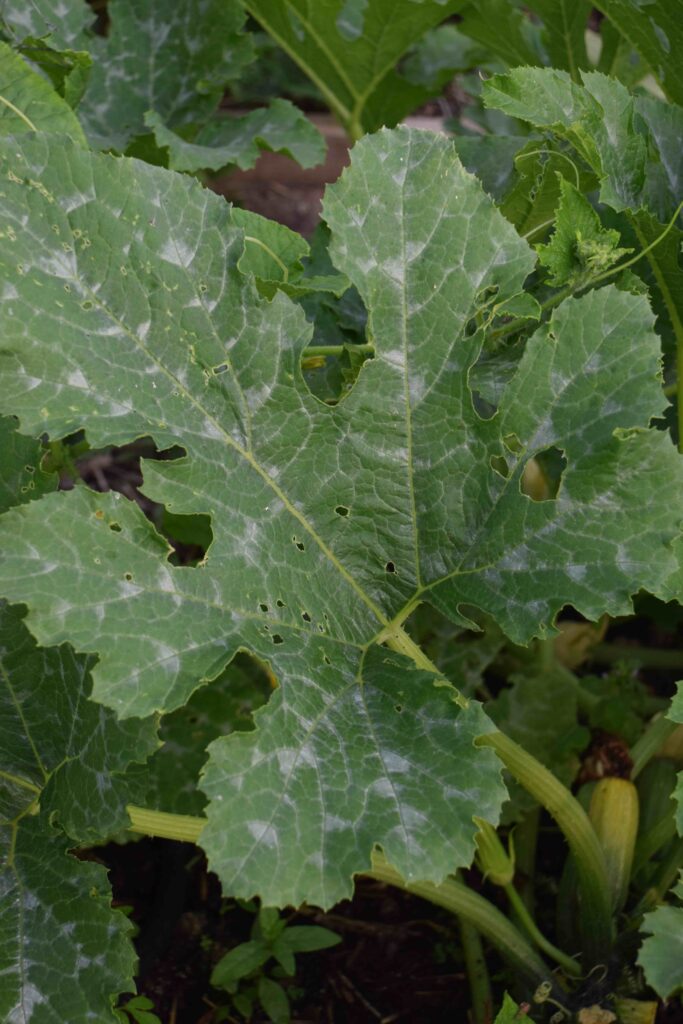
If you are looking for a crop that is quick and easy to grow, in the garden or in a pot in the patio, courgettes are the perfect choice.
Courgettes are closely related to marrows and other summer squash but they are specially bred to produce lots of ‘fruits’. You could grow a marrow plant and pick off the small fruits but you won’t get a heavy crop. If you want courgettes it is best to grow courgettes!
But there is a catch. Even if you grow a courgette plant, if you let one or two fruits get big, the plants will stop producing more courgettes. After all, the whole point of its existence is to set seeds and then die so if you let a fruit mature the plant has done what it needs to do. But if you keep picking off the small courgettes throughout summer it will keep producing more.
People often have a glut of courgettes in summer but the way to avoid this is to pick them small – smaller than you can buy them. I try to pick them off one or two days after the flowers close. The flowers only last a day and then the courgette swells. By picking them small I get the very best quality produce and I don’t end up with monster courgettes that can feed a family with one fruit. If you do get into the situation where you can’t keep up with the crop then cut off all the large fruits and put them on the compost heap or give them to someone who has hens. It will keep your plants healthy and cropping.
But we are getting ahead of ourselves! Now is the perfect time to start your courgettes. I sowed mine yesterday.
You can start by buying some plants or you can sow seeds. Courgette plants grow very quickly. The advantage of sowing your own is that it is cheaper than buying plants AND you will have a greater choice of varieties. Not all courgettes are green. The fruits can be yellow, striped, greyish and even round. I prefer the taste and texture of the yellow and grey kinds but if you buy seeds you can choose your favourite. The other consideration is that F1 hybrid seeds will produce plants that are more productive. They cost more but a packet will contain 6-10 seeds and you won’t need more than three or four plants unless you really love courgettes.
The other thing to look for is ‘parthenocarpic’ varieties such as ‘Sure Thing’. These produce fruits without being pollinated (a bit like cucumbers and bananas). A problem with growing courgettes is that you need a male and a female flower open on the same day to produce a fruit – (each plant will produce male and female flowers, usually on the same day, but not always). When plants are small this can be a problem though not when plants get large. If you are only growing one or two plants, in pots on the patio for example, these parthenocarpic varieties are a big advantage.

You can’t plant out your courgette plants till mid-May so there is time to sow now. Sow one seed per pot, with the seed on its side, about 1cm deep. Keep moist and warm till the seedling appears. Give it plenty of light.
Prepare the soil by forking in as much organic matter as you can get! Courgettes prefer a light, rich soil and lots of moisture and sunlight. Depending on the variety, you need to space the plants about 75cm apart. I would always grow a few spares in case snails munch a plant when it is newly planted. Once growing away well the plants are generally untroubled by snails but young plants will disappear overnight.

You should plant out the courgettes when they have one or two proper leaves and long before they have produced flower buds.

You can easily grow a courgette in a pot. Fill the pot with good multipurpose compost. A pot about 30cm wide and deep is just about big enough though up to 45cm is better. Or you could grow two plants in a growing bag. You will need to keep the plants moist and that means lots of watering in summer. And you also need to feed. As soon as the plants are established and growing well you will need to apply a liquid fertiliser such as tomato feed once a week.
There are very few other problems. Mildew on the leaves is the biggest issue. This is most common if plants are allowed to dry out or if they are starved of nutrients. Do not confuse this with the natural silvery spotting on the leaves – above. In wet weather it is possible that the flowers can rot at the ends of the fruits but if you pick them quickly you can save the crop.
If you are thinking of growing something to eat this year and have not got round to it yet, buy and sow some courgette seeds. They are quick to grow and easy to use in the kitchen. You might even save money AND your own crop will be tastier and fresher. And I recommend courgettes as a way to get kids gardening. The plants are big and grow fast, the flowers are huge and bright and attract bees and you can grow them in a pot on the patio. And if you grow round or coloured courgettes they might at least be used to make vegetable monsters if they are not eaten!
Weekly reminders
Protect hostas and other plants from slugs and snails. The mild, wet winter has meant that this spring is a real warzone with these pesky pests!
Protect roses, if they are prone to blackspot, by spraying once every two weeks (or according to pack instructions) with a fungicide to prevent the disease. There is usually no need to use a combination spray and control aphids.
Sow sunflowers for summer colour and other hardy annuals
Sow peas in raised beds and pots. Mangetout peas are just as easy and provide a longer cropping period
Keep sowing salad leaves in pots, growing bags and in the garden